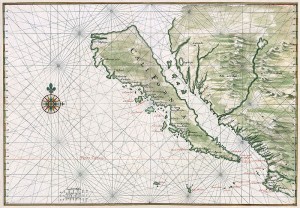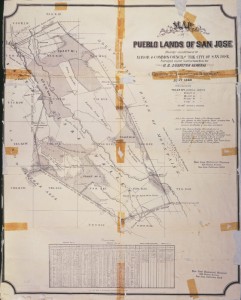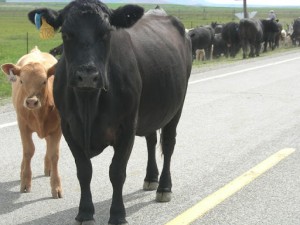
Continuing on in the early history of Spanish exploration in California . . .
After a few excursions by sea between 1542-43 (Juan Rodriguez Cabrillo) and 1602-03 (Sebastian Vizcaino), the Spanish more or less left Alta California alone until 1769
(Historical aside: Spanish ships sailed along the California coast regularly from the 1580s on. Spanish ships began hauling plunder from Manila back to New Spain (Mexico) in the mid-1500s. In 1584, one captain, Francisco de Galli found it was easier to get to Mexico by sailing north along the Japanese current across the Pacific Ocean, which deposited the ships somewhere around Cape Mendocino. From there, ships would sail south along the coast to Mexico. But there are no records that any ever anchored or landed anywhere along the coast. They hit the Cape, turned right, hooked around the bottom of Baja California, and landed in Acapulco.)
The reason the Spanish suddenly showed a renewed interest around 1769 in establishing their presence in California is because the Russians were working their way down the California coast. (They got as far south as Fort Ross in Sonoma county.) So King Carlos III (and his advisors) dusted off the old coast pilots, recalled that there were two good ports in California (San Diego and Monterey), and set out to build a presidio and mission in each.
The man who planned the expedition to set up shop in these two ports was Jose de Galvez, the visitor general of New Spain. His plan was to send four expeditions simultaneously: two by land, two by sea. Bancroft, in a footnote (page 129), sets out a translation of the orders given by Galvez to Captain Vicente Vila, commander of the ships. They start with these two directions:
lst. The object is to establish the Catholic faith, to extend Spanish domain, to check the ambitious schemes of a foreign nation, and to carry out a plan formed by Felipe III. as early as 1606. Therefore no pains can bo spared without offense to God, the king, and the country.
2d. The vessel (San Carlos) being new, strong, and well supplied for over a year, to be followed by the San Antonio with additional supplies, having only 300 leagues to make, having a strong military force, and going to a land whoso natives are docile, have no arms but bows and arrows, and are without boats, there can be no excuse en lo humano for failure.
But hey, Vicente. No pressure.

